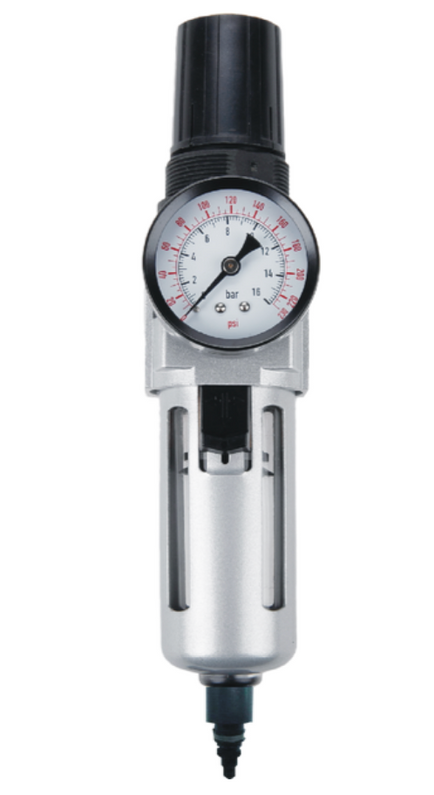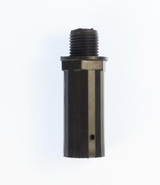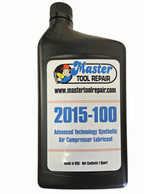Why Dry Air is Non-Negotiable for Your Operations
In many industrial and commercial settings, compressed air is the lifeblood of operations. It powers tools, drives machinery, and facilitates critical processes. But here’s a crucial question: is your compressed air truly dry? While many focus on filtration, an often-overlooked hero in the compressed air system is the air dryer. Without it, your "clean" air can still be laden with moisture, leading to a cascade of problems from equipment corrosion and product contamination to reduced efficiency and costly downtime. Dry air isn't a luxury; it's a fundamental requirement for reliable, high-performance operations, whether you're using a brand-new compressor or an existing one.
Understanding Your Air Dryer: A Quick Look at Types
Just as there are different needs for compressed air, there are different types of air dryers designed to meet specific dew point requirements. The most common include:
- Refrigerated Air Dryers: These are perhaps the most prevalent. They work by cooling the compressed air, causing moisture to condense and be removed. They are highly efficient for many applications and generally provide a dew point of around 35-40°F (2-4°C).
- Desiccant Air Dryers (Adsorption Dryers): For applications requiring much lower dew points (down to -40°F/-40°C or even lower), desiccant dryers are the answer. They use a regenerative desiccant material to adsorb moisture from the compressed air. There are various types, including heatless, heated purge, and blower purge.
- Membrane Air Dryers: These dryers use a selective permeable membrane to separate water vapor from the compressed air. They are often compact, quiet, and do not require electricity, making them suitable for point-of-use applications or hazardous environments.
The Unsung Hero: Essential Maintenance for Each Dryer Type
No matter the type, consistent maintenance is paramount to ensuring your air dryer continues to deliver clean, dry air. Neglecting your dryer is like ignoring a ticking time bomb in your compressed air system, impacting your compressor's longevity and performance.
For Refrigerated Air Dryers:
- Regular Condensate Drain Checks: Ensure the automatic drain is functioning correctly and clearing condensate. Clogged drains can lead to moisture carryover.
- Pre-Filter and After-Filter Replacement: While not part of the dryer itself, these filters protect the dryer and remove oil/particulates that can foul the heat exchanger. Follow manufacturer recommendations for replacement.
- Refrigerant Level Check: Low refrigerant can impact the dryer's ability to cool effectively. This should be checked by a qualified technician.
- Heat Exchanger Cleaning: Keep the heat exchanger fins clean to ensure proper heat transfer. Dust and debris buildup can reduce efficiency.
For Desiccant Air Dryers:
- Desiccant Material Replacement/Regeneration: Over time, desiccant material can degrade or become contaminated, reducing its adsorption capacity. Follow manufacturer guidelines for replacement or regeneration cycles.
- Check Purge Valves and Nozzles: Ensure these are operating correctly to allow for efficient regeneration of the desiccant.
- Inspect and Replace Solenoid Valves: These critical components control the air flow during the adsorption and regeneration cycles.
- Pre-Filter and After-Filter Maintenance: Just like with refrigerated dryers, proper filtration upstream and downstream is crucial to protect the desiccant and prevent desiccant dust from entering the air stream.
- Dew Point Monitoring: Regularly monitor the outlet dew point to detect any degradation in performance early on.
For Membrane Air Dryers:
- Pre-Filter Maintenance: Membrane dryers are highly sensitive to oil and particulates. Robust pre-filtration and regular filter changes are essential to protect the membrane.
- Membrane Element Replacement: The membrane element has a finite lifespan and will eventually need to be replaced. Follow manufacturer recommendations.
- Monitor Purge Air Flow: Ensure the purge air flow is within specifications, as this is vital for the membrane's drying performance.
Warning Signs: When Your Dryer is Crying for Help
Ignoring these red flags can lead to significant issues, impacting both your tools and your air compressor. Be vigilant for:
- Increased Moisture in the Air Line: Rusting tools, water in air lines, or moisture in finished products are undeniable signs of dryer failure.
- Dew Point Alarms: Many modern dryers have dew point sensors and alarms. Don't ignore them!
- Unusual Noises: Rattling, hissing, or grinding sounds can indicate mechanical issues.
- Increased Energy Consumption: A dryer working harder to remove moisture can draw more power.
- Short Cycling (Refrigerated Dryers): If your refrigerated dryer is turning on and off too frequently, it could indicate an issue with refrigerant levels or controls.
- Visible Oil or Contamination in Desiccant Beds: This indicates a failure in upstream filtration.
The First Line Of Defense: Water Traps
If you don’t have the capability to add one of the above dryer systems to your air compressor setup, you can still mitigate moisture in your airlines by installing an in-line water trap/particulate filter. An inexpensive add-on, this is a must-have for your air compressor.
Invest in Dry Air, Invest in Your Success
Maintaining your air dryer isn't just about preventing breakdowns; it's about safeguarding your equipment, protecting your products, and optimizing your operational efficiency. Regular preventative maintenance, coupled with an understanding of your dryer's specific needs, will ensure you continue to receive the clean, dry air vital for your success.
Recent Posts
-
The Breath of the Pump: Why Your Air Compressor Needs a Healthy Crankcase Breather/Vent
Your air compressor is a powerhouse, a workhorse essential to your operation. We all know the import …Dec 4, 2025 -
The Quiet Killer: How a Clogged Air Compressor Filter Destroys Your Pump
A well-maintained air compressor is the lifeblood of your workshop or job site. It runs reliably, re …Nov 19, 2025 -
The Benefits of Synthetic Air Compressor Oil: Why It's Worth the Investment
Your air compressor is a powerhouse, an indispensable tool that keeps your business running. Yet, th …Nov 11, 2025




